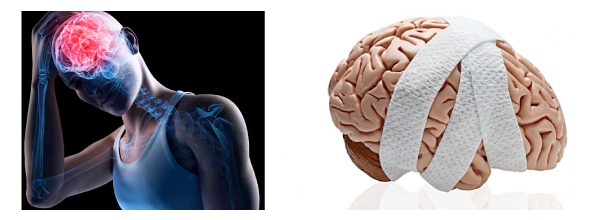
A concussion is the most common type of traumatic brain injury. Typical causes are a blow to the head, face or neck or a whiplash style injury.
Symptoms can include headaches, dizziness, loss of balance, hypersensitivity to light/sound, fatigue, irritability, insomnia, visual impairments, difficulty with memory/concentration and emotional disturbance.
Most concussions resolve in 7- 10 days with rest but when signs and symptoms last for longer than that, it is post concussion syndrome. Physiotherapy rehabilitation can help.
The Physiotherapists at Peak Performance Physiotherapy have specialized training in assessment and treatment of concussion and vestibular disorders.
Based on the initial assessment, a customized concussion treatment plan will be designed for each patient that may include:
- Manual therapy and exercise for cervico-genic symptoms
- Vestibular exercises
- BPPV treatment
- Cranio-sacral therapy
- Acupuncture
- Visual retraining- focal/spatial/reading/3D
- Visual/vestibular integration
- Proprioception/balance retraining
- Sub-threshold exercise program
- Cognitive/memory retraining
- Pacing and planning
Back to school, work, sport….life!
Post Concussion Syndrome
Ok, So You Have “Rested” as per the Concussion guidelines but Symptoms Persist And It Is Time To Come “Out Of Rest”… What Now?
We have the “Concussion Kit” designed to help with resolving concussion symptoms by using methods to reduce excessive cortical and autonomic stimulation. Then progressively introduce integrative visual/vestibular/proprioceptive exercise and sub-threshold cardio exercise to get patients out of the danger zone where symptoms re-occur. The “Concussion Kit” is based on the latest research and evidence has shown this protocol to be of benefit to reduce symptomology.
Pacing and Planning
The correlation between prolonging concussion symptoms and excessive activity is known and most patients don’t see this connection. Pacing and planning provides a simple structured way of tracking activity within a limit. Every activity has a point value based on difficulty, onset of symptoms and amount of recovery. Patients get 10-12 points per day. The day is planned to stay within the points limit. This provides a concrete limit to activity. This decreases the recovery time from provoking symptoms which prolongs overall recovery.
Binasal Occlusion and Visual Processing and Visual/ Vestibular Integration Exercise
Post trauma vision syndrome (PTVS) results in over focalization when patients use their focal vision or spatial relationship. They have trouble switching between focal and spatial systems or using the 2 systems simultaneously. This is the overwhelming feeling, dizziness, headache and fatigue that is experienced with walking into busy public places, doing too much or driving a car.
This is where binasal occlusion, visual processing exercises and visual/vestibular integration exercises can resolve these symptoms.
Abnormal Egocentric Localization (AEL)
This is the localization of objects in the environment with respect to “oneself” or “ego-center”. The center of the trunk in the midline is the reference point for the spatial co-ordinate system. It is a visually binocularly based system and used in all daily activities.
It is part of the proprioceptive system and loss of this integration can result in loss of balance.
This loss of localization can be regained by weighted compression garments giving proprioceptive input to the localization system and helping to restore the proprioceptive system.
Sleep Hygiene
Click Here for more information on the proper sleep hygiene when dealing with a concussion.
Diet
Diet is very important when dealing with concussions. Your body needs the energy to help assist your brain in the recovery. Click Here for more information on diets and concussions.
Visual Exercises
Eyes Can Learn.com is an amazing place to access eye exercises. Click Here to get started.
Complete Concussion Management Post Injury Advice
Click Here to a complete breakdown of the stages, warning signs and symptoms of your post concussion state.
Complete Recovery Stages
Click Here for an up to date look at the different stages that need to complete along the road to recovery.
